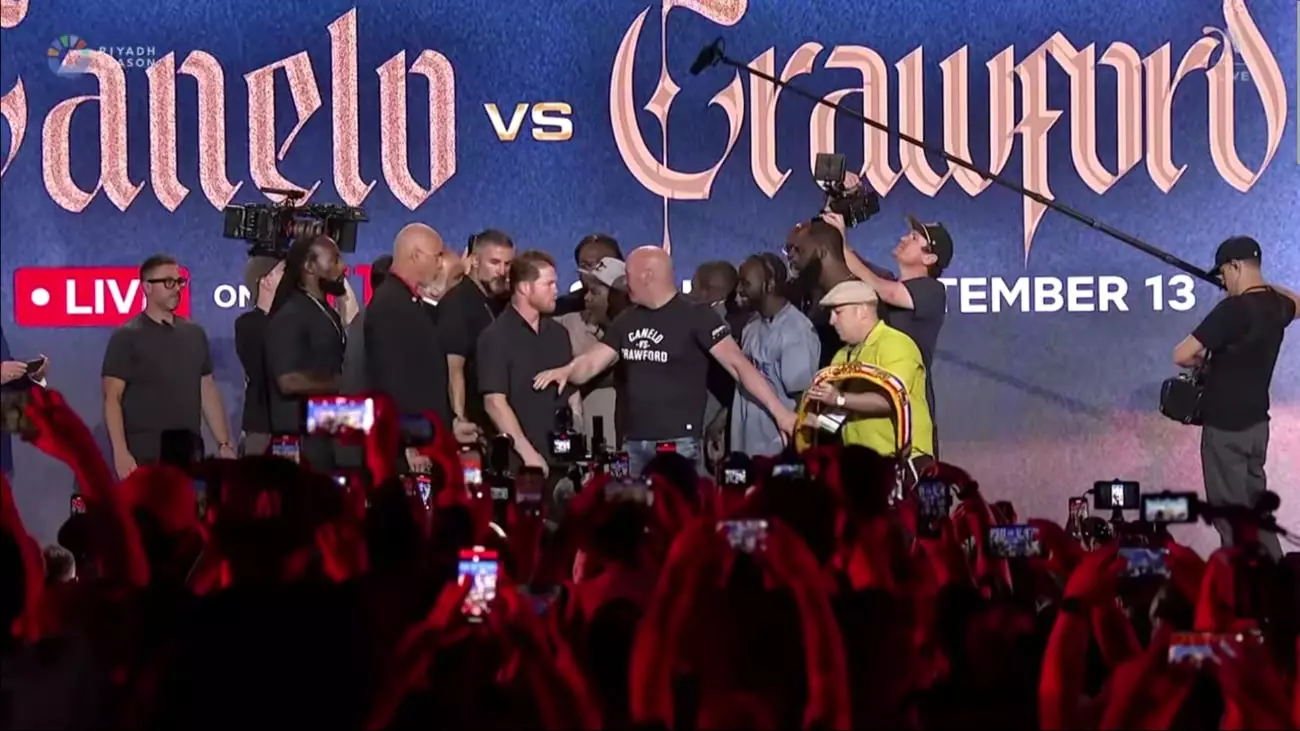In the world of professional boxing, the narrative surrounding rivalries can often be as compelling as the battles themselves. As the highly anticipated showdown between Canelo Alvarez and Terence Crawford approaches, fans are abuzz with expectations and excitement. Yet, unlike traditional bouts marked by palpable hostility, this event has been characterized by an unexpected camaraderie, leading many to express their discontent. Why is there a vocal segment of fans who crave animosity before the fists start flying? Is it simply a nostalgia for the fierce rivalries of the past, or is it indicative of a deeper desire for drama in sports?
The one-upmanship that once defined fights—a fierce dislike manifesting through aggressive trash talk and pre-fight theatrics—has taken a backseat to a more measured approach. In a sport where spectacle and intensity are often intertwined, the sight of two competitors sharing a meal prior to their encounter has drawn sharp criticism. Unsurprisingly, boxing enthusiasts instantly recall the heated rivalries of legends like Muhammad Ali and Joe Frazier, who could hardly occupy the same space without combusting in verbal warfare. With that rich history in mind, the current landscape of cordiality seems to lack the narrative tension that fans have come to treasure.
A Disruption of Expectations: The Face-Off Incident
However, in a twist that delivered at least some of the drama that fans crave, a face-off between the boxers took a heated turn, igniting a brief but intense confrontation. Surrounded by promotion heavyweights such as Dana White, Canelo and Crawford initially appeared composed, but that façade quickly crumbled. A shove from Canelo toward Crawford sent shockwaves through the crowd, drawing mixed responses of shock and exhilaration. It was a vivid reminder that beneath the facade of civility, raw emotions run deep, and both fighters are acutely aware of what is at stake.
Critics will argue that such moments are staged for publicity, yet what transpired seemed genuine. Canelo’s mild-mannered demeanor flipped to fury within seconds, suggesting that the rivalry is not merely promotional theater but an authentic clash of wills. This snapshot of tension adds layers to the fight narrative and rekindles intrigue in a context marred by accusations of mutual respect. While it may lack the razor-sharp animosity that thrilled audiences in decades past, this evolving dynamic remains compelling and worthy of exploration.
The Role of Promotion and Showmanship
While some view the lack of ferocity between the two fighters as disappointing, it raises an intriguing question about what role promoters play in shaping narratives in contemporary boxing. With a focus on civility and respect, are promoters attempting to appeal to a demographic that favors sportsmanship over drama? The stakes are undeniably high; pay-per-view sales hinge on generating interest, and the promotion of conflicts, even if they stem from fabricated tension, can lead to increased viewership and revenue.
The perception of when athletes lose their temper—and how that translates to a fight’s success—is fraught with complexities. For instance, Canelo’s unexpected agitation mirrored the archetype of the fighting spirit, reaffirming the notion that raw competitive instincts lurk beneath a composed exterior. Comparisons to the likes of Roberto Duran serve to remind us that the brawlers of yore thrived on such encapsulated passion. As much as fans seek ferocity from fighters, the new context requires us to rethink what it truly means to be a fighter.
Looking Ahead: The Fight as a Cultural Landmark
As fight night approaches, one thing is clear: both Canelo and Crawford are vying not just for glory within the ring but also for a cultural moment that resonates with the collective consciousness of boxing enthusiasts. The blend of shared respect and brief confrontations can amplify the narrative, providing layers that enrich the viewing experience.
In a sport where passion can dictate the course, the fight transcends mere athleticism. It encapsulates the heart of competition—the struggle not just against an opponent’s fists, but also against the ghosts of rivalry steeped in history. This impending bout signifies more than just a clash of titans; it represents the complex intersection of sport, spectacle, and emotional investment that fans both love and crave. As fans prepare to witness the unfolding drama, expectations soar. This fight stands as a testament to how rivalries evolve, transforming old narratives into new tales filled with hope, aspirations, and, yes, a hint of animosity that many still yearn for.

